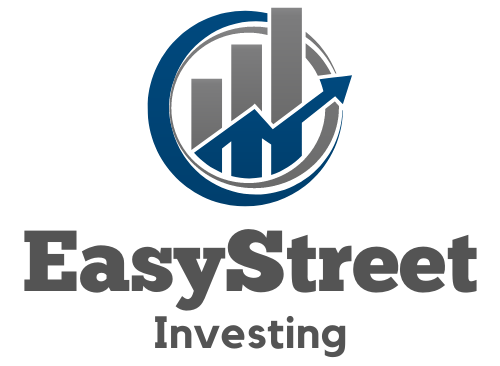In the fast-paced world of real estate investment, savvy investors constantly seek ways to maximize returns. Enter the realm of value-add strategies, an approach that can transform an ordinary property into a high-yield asset. This article peels back the layers of this lucrative tactic, offering insights into how one can elevate a property’s worth through strategic enhancements and shrewd management. You’ll be equipped with actionable knowledge on identifying potential, executing improvements, and optimizing operations to boost cash flow and asset value.
We’re diving deep into the nuts and bolts of value addition in real estate without getting lost in jargon. Whether you’re a seasoned investor or just dipping your toes in the property market waters, understanding how to spruce up a fixer-upper or streamline a rental’s operations could be your ticket to greater profits. From cosmetic upgrades that charm tenants to energy-efficient retrofits that slash expenses, we’ll explore various avenues for increasing a property’s appeal and functionality. Get ready to unlock the secrets of successful real estate investments that promise more bang for your buck!
Important Highlights
1. Implementing Property Upgrades: One effective value-add strategy in real estate investment is to enhance the physical structure of a property. By upgrading amenities, modernizing facilities, or improving energy efficiency, investors can increase a property’s attractiveness to tenants, which may result in higher rental incomes and reduced vacancies. These upgrades, while requiring upfront capital, can significantly boost property value and overall return on investment.
2. Operational Improvements: Beyond physical enhancements, optimizing operational efficiency is crucial for maximizing real estate asset performance. This includes adopting better property management practices, reducing maintenance costs, and using technology to streamline processes. By doing so, investors can reduce overhead expenses and improve the net operating income (NOI), directly influencing the asset’s value due to its impact on the capitalization rate used in valuing income properties.
3. Tenant Mix Optimization: For multi-tenant properties like shopping centers or office buildings, curating an ideal mix of tenants can be a potent value-add approach. Securing a blend of anchor tenants and smaller businesses not only enhances the appeal of the property but also promotes synergy among occupants, potentially leading to increased foot traffic and tenant stability.
4. Repositioning Assets: Real estate investors often seek opportunities to reposition assets within the market. This could involve changing a property’s branding or tenant base, converting the asset into a higher-value use (such as transforming an industrial space into loft apartments), or navigating zoning changes to unlock new development potential. Repositioning requires a deep understanding of market dynamics but can yield substantial rewards when executed effectively.
5. Lease-Up Strategies: When managing newly developed or significantly renovated properties, executing a strong lease-up strategy is vital to stabilize occupancy rates swiftly. This entails aggressive marketing efforts and possibly offering concessions to attract new tenants quickly. The speed at which occupancy levels rise influences investor confidence and the asset’s financial performance during critical early periods following development or renovation work.
Identifying Value-Add Opportunities in Real Estate
To effectively implement value-add strategies in real estate investment, one must identify properties that present opportunities for enhancement. Look for assets with below-market rents, deferred maintenance, or outdated design features. By pinpointing these characteristics, investors can project the potential upside of a property post-improvement. A thorough market analysis and comparison with well-maintained properties can reveal the extent of value-addition required to boost returns.
Strategic Renovations and Upgrades
Focusing on strategic renovations is crucial in adding value to an investment property. Consider upgrading kitchens and bathrooms, which often provide the highest return on investment. Additionally, incorporating modern amenities like energy-efficient appliances or smart home technology can attract more tenants and justify higher rents. When planning renovations, ensure they align with the local market demand to avoid over-improvement.
Repositioning Through Effective Marketing
Repositioning a property in the marketplace is another value-add tactic that involves altering the public’s perception. This could mean rebranding a residential complex or promoting an office building’s newly installed high-speed internet capability. Use targeted marketing strategies to highlight the property’s upgrades and unique selling points, thereby attracting a different demographic or allowing for premium pricing.
Optimizing Operational Efficiency
To increase a property’s profitability, streamline its operations by adopting efficient management practices. Implement property management software to automate tasks and improve tenant communication. Reducing operational costs through better vendor contracts or energy savings contributes directly to the bottom line, enhancing the asset’s overall value.
Tenant Retention Strategies
Maintaining high occupancy rates is paramount in real estate investing. Develop robust tenant retention strategies, such as offering incentives for lease renewals or fostering a community atmosphere among residents. Happy tenants are less likely to move out, reducing turnover costs and keeping revenue consistent.
Add-On Services and Revenue Streams
Increase cash flow by introducing additional services or amenities that tenants are willing to pay for. This might include pet-washing stations, storage units, parking spots, or on-site fitness centers. These add-ons not only raise property value but also enhance tenants’ living experience.
Leveraging Local Market Dynamics
Closely monitor local economic trends and housing demands to make informed decisions about your investments. If a neighborhood is showing signs of growth or increased interest from specific demographics, tailor your improvements and marketing efforts accordingly to capitalize on these dynamics.
Zoning Changes and Land Entitlements
Sometimes, the greatest value can be added by changing a property’s use case through zoning changes or land entitlements. Although this process can be complex and time-consuming, successfully rezoning land for higher-density projects or different uses can significantly increase its worth.
Risk Management in Value-Add Projects
Prioritize risk management when undertaking value-add projects by conducting comprehensive due diligence before purchase and throughout project execution. Consider potential pitfalls like construction delays or cost overruns and develop contingency plans to mitigate these risks.
Evaluating Success of Value-Add Strategies
Evaluate the success of your value-add strategies by reviewing before-and-after financial metrics such as net operating income (NOI), cap rate improvements, and return on investment (ROI). Regular assessments will guide future investment decisions and adjustments in strategy.
? What Are Key Steps for Implementing Value-Add Strategies?
- Analyze potential properties for hidden opportunities that could lead to increased rental income or asset appreciation after improvements are made.
- Select cost-effective renovations that align with market demands while providing significant ROI upon completion.
- Employ creative marketing techniques to reposition the asset within its market segment after enhancements have been completed.
- Streamline operations to reduce costs without compromising tenant satisfaction or service quality.
- Innovate retention programs aimed at keeping existing tenants happy while minimizing vacancy rates.
- Create new revenue streams through ancillary services tailored to tenant needs and preferences.
- Maintain a finger on the pulse of local market trends to make nimble decisions benefiting from regional developments.
- Navigate zoning laws skillfully if aiming for significant use changes or density modifications to unlock additional value.
- Incorporate strict risk management protocols throughout all stages of the value-add process to safeguard against unforeseen complications.
- Consistently assess project outcomes against initial projections to learn from each venture and refine approaches over time.
Can Synthetic Options Strategies Be Used to Enhance Real Estate Investment Value-Add Strategies?
Incorporating synthetic options strategies into real estate investment can dramatically enhance value-add initiatives. By leveraging financial instruments, investors can hedge risks and optimize cash flow. Mastering synthetic options for strategic investing allows for innovative approaches to financing projects, ultimately maximizing returns and providing a competitive edge in the real estate market.
Frequently Asked Questions
What Are Value-Add Strategies in Real Estate?
Value-add strategies in real estate involve making improvements or enhancements to a property to increase its value. This can include physical upgrades, better management, or repositioning the asset in the market.
How Can I Identify Properties Suitable for Value-Add?
To spot ideal candidates for value-add investments, look for properties with below-market rents, outdated designs, or inefficient operations. These factors suggest potential for improvement and growth.
Is Value-Add Investing Riskier Than Other Strategies?
While there is inherent risk in any investment strategy, value-add projects carry a moderate level of risk due to their need for significant capital and market understanding. However, they also offer higher potential returns.
What Types of Improvements Yield the Best ROI?
Kitchen and bathroom renovations often lead to solid returns on investment. Upgrading building systems and enhancing curb appeal are also effective in adding value to a property.
Can Value-Add Be Applied to Any Type of Real Estate?
Yes, this approach can be applied across various types including residential, commercial, and industrial sectors. Each type will have unique opportunities for enhancement.
How Important Is Location When Considering Value-Add?
Location is crucial as it greatly influences a property’s desirability and potential for rent increases after improvements are made. A prime location can significantly boost the effectiveness of value-add strategies.
Should I Work With Professionals on a Value-Add Project?
Engaging with experienced contractors, architects, and property managers can help ensure that renovations are completed efficiently and add maximum value to your investment.
How Long Does It Take To See Returns from Value-Add Investments?
The timeline can vary widely but typically ranges from one to several years depending on the scope of improvements and market conditions.
Are there Tax Benefits Associated with Value-Add Real Estate?
Certain tax benefits like depreciation or deductions for renovation expenses may apply to value-add strategies, but it’s important to consult with a tax advisor for specifics related to your situation.
What Should Be My Exit Strategy for a Value-Add Investment?
An exit strategy could involve selling at peak market value post-improvement or refinancing to pull out equity while retaining ownership. The best choice depends on individual investment goals.
Closing Insights on Enhancing Property Worth
In essence, delving into value-add real estate investment requires both insight and innovation. By identifying undervalued properties with untapped potential and strategically improving them, investors can unlock significant profits. Yet, it’s imperative not just to focus on physical upgrades but also consider operational efficiencies and market positioning to fully capitalize on these opportunities.
The journey of transforming an underperforming asset into a lucrative venture is as challenging as it is rewarding. With careful planning, thorough market analysis, and a hands-on approach to renovations and management, real estate investors can find great success through value-add strategies. Just remember: every enhancement should aim not only at increasing property worth but also at enriching tenant experiences—after all, true value comes from creating spaces where people want to live, work, and play.

